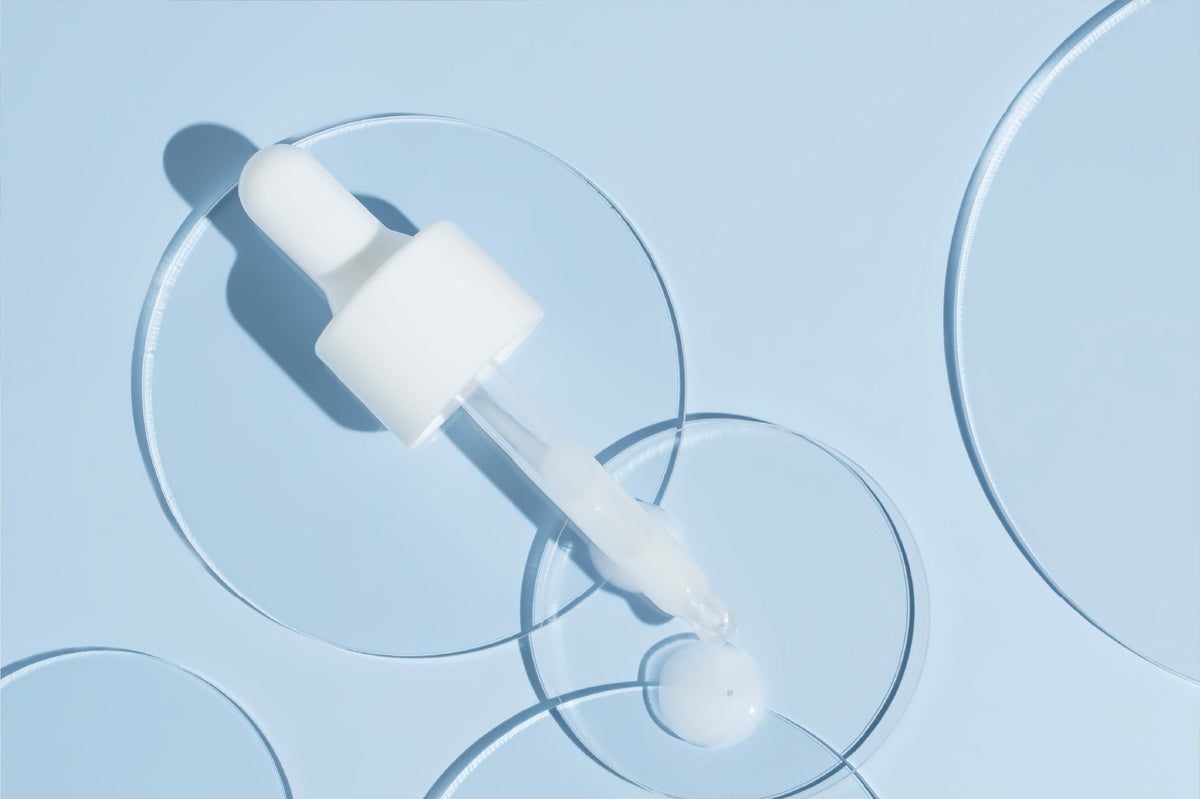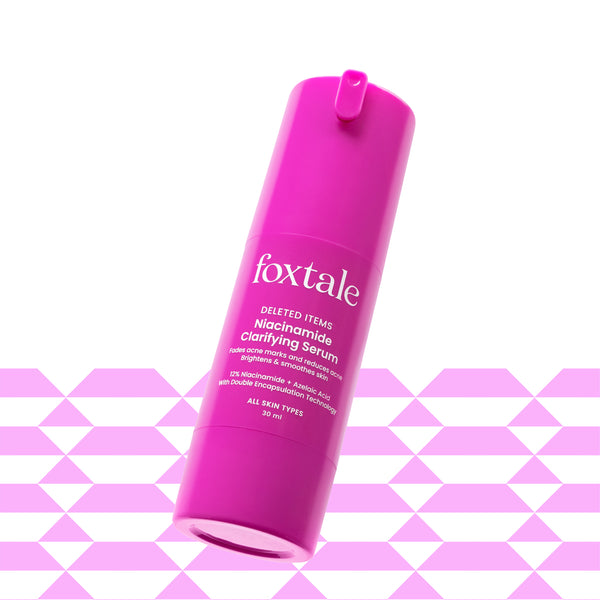
There’s a good chance you’ve come across the term active ingredients in skincare, and you might even be using some without realising it. Two of the most popular ones? Niacinamide and Glycolic Acid. One’s a Vitamin B3 derivative that soothes and strengthens, the other, a sugarcane-derived AHA that buffs away dullness. Different functions, same mission: to actively treat your skin’s unique concerns over time.
They’re both stars in their own right, but do Niacinamide and Glycolic Acid pair well together? If that’s the question on your mind, stick around. We’re here to guide you through it, step by step.
Niacinamide Benefits in Skincare
With its reputation for versatility and tolerance across skin types, Niacinamide has become a mainstay in skincare routines. From fortifying your skin’s natural defenses to controlling oil production, this multitasker does it all – and yes, we’ve got the proof to back it up.
- For those with acne-prone skin, it helps regulate sebum production, reducing excess oil and the likelihood of breakouts.
- Its brightening properties stem from its ability to disrupt melanin transfer, making it highly effective. Use it in fade hyperpigmentation, melasma, and sun spots for an even-toned, radiant complexion.
- It also strengthens the skin’s natural barrier, helping protect against environmental stressors. This makes it especially beneficial for sensitive skin types and those dealing with rosacea, inflammation, or general sensitivity.
- Regular use of Niacinamide can visibly improve the appearance of fine lines and wrinkles, making your skin look smoother and more youthful.
Glycolic Acid Benefits for Your Skin
Known for its small molecular size, Glycolic Acid penetrates the skin easily, making it a game-changer when it comes to exfoliation. But its benefits don’t stop there – this AHA brings a whole lot more to the table.
- Glycolic Acid exfoliates by breaking the links between dead skin cells, helping your complexion appear brighter.
- By speeding up cell turnover, Glycolic Acid helps fade acne scars, sun spots, and other forms of hyperpigmentation over time.
- It also softens rough patches and evens out the texture, making your skin appear smoother and brighter.
- Its exfoliating action prevents clogged pores, one of the main culprits behind acne. This makes it a powerful remedy for those dealing with both active acne and the marks it leaves behind.
- Glycolic acid boosts Collagen, too, helping smooth out fine lines and keep wrinkles at bay in the long run.
Can I Use Glycolic Acid and Niacinamide Together?
Like with most skincare acids, you can use Glycolic Acid and Niacinamide together – you just need to do it right. Glycolic Acid goes deep and can sometimes be a little harsh, especially on sensitive skin. Think dry patches or redness in the beginning. But following it up with Niacinamide can help calm things down and strengthen your skin barrier. It’s a winning combo – Glycolic clears the way, Niacinamide steps in to hydrate and heal.
The Right Way to Use Glycolic Acid and Niacinamide in your Routine
Glycolic acid has a pH between 3.0 and 4.0, while Niacinamide sits closer to 6.0. Mixing them directly can shift the pH balance, dulling Glycolic Acid’s performance. Here’s how to avoid that and still reap the benefits of both:
Go For A Product That Combines The Two
Look for high-quality formulations that contain both Glycolic Acid and Niacinamide. These expertly crafted serums are pH-optimized to deliver results without compromising skin health.
Use Them At Different Times Of The Day
A Niacinamide serum is perfect for your morning routine – it’s non-acidic, layers well with moisturizers and SPF, and keeps your skin calm and protected throughout the day. Glycolic acid needs a little more breathing room to do its thing, so the nighttime routine is where it shines. Give it 30 -40 minutes before layering other products for the best results.
Use Them Alternatively
You could also switch things up by using Glycolic Acid one day and Niacinamide the next. It’s an easy way to give your skin the benefits of both without overwhelming it.
To get the best results and avoid irritation, always patch-test new products, introduce actives slowly, and never skip sunscreen, especially when using exfoliants like Glycolic Acid.
Possible Side Effects and How to Prevent Them
Starting a routine with Glycolic Acid and Niacinamide? It’s normal to notice some redness, flakiness, or irritation, especially if your skin is sensitive or you’re new to actives. Here’s how to make the transition smoother:
• Start with a lower percentage of Glycolic Acid.
• Limit it to 2-3 times a week.
• Layer hydrating products into your routine.
• Finish with Niacinamide – it keeps your skin hydrated and your barrier strong.
Conclusion
Still side-eyeing that combo of Niacinamide and Glycolic Acid? Now you know they can – with the right routine! So go ahead, layer thoughtfully, hydrate generously, and let your skin soak in all the glow-boosting goodness.
FAQs
1. Can I use Niacinamide and Salicylic Acid together?
Yes, you can! While Salicylic Acid works to unclog pores and reduce acne, Niacinamide helps soothe the skin and reduce inflammation while strengthening the barrier. Just make sure to apply Salicylic Acid first (on clean, dry skin) and follow up with Niacinamide to soothe and calm your skin.
2. Does Niacinamide cause purging?
Not really. Unlike exfoliating acids or Retinoids that speed up skin cell turnover (often causing breakouts as your skin adjusts)—Niacinamide works gently to regulate oil production, reduce redness, and improve overall texture. If you do notice breakouts, it might be irritation or sensitivity rather than true purging.
3. Can we use Glycolic Acid everyday?
It depends on your skin type and the product’s concentration. While some low-strength Glycolic Acid products are formulated for daily use, most people do better using it 2-3 times a week to avoid over-exfoliation. If you’re just starting out or have sensitive skin, start slow and always follow with hydrating products and SPF in the daytime.
4. Is Glycolic Acid good for oily skin?
Yes, Glycolic Acid is great for oily skin! As an AHA (alpha hydroxy acid), it exfoliates the skin, helps clear out dead skin cells, and reduces the appearance of pores. It can also improve texture and prevent buildup that can lead to breakouts – making it a great choice for those with oily or acne-prone skin.




